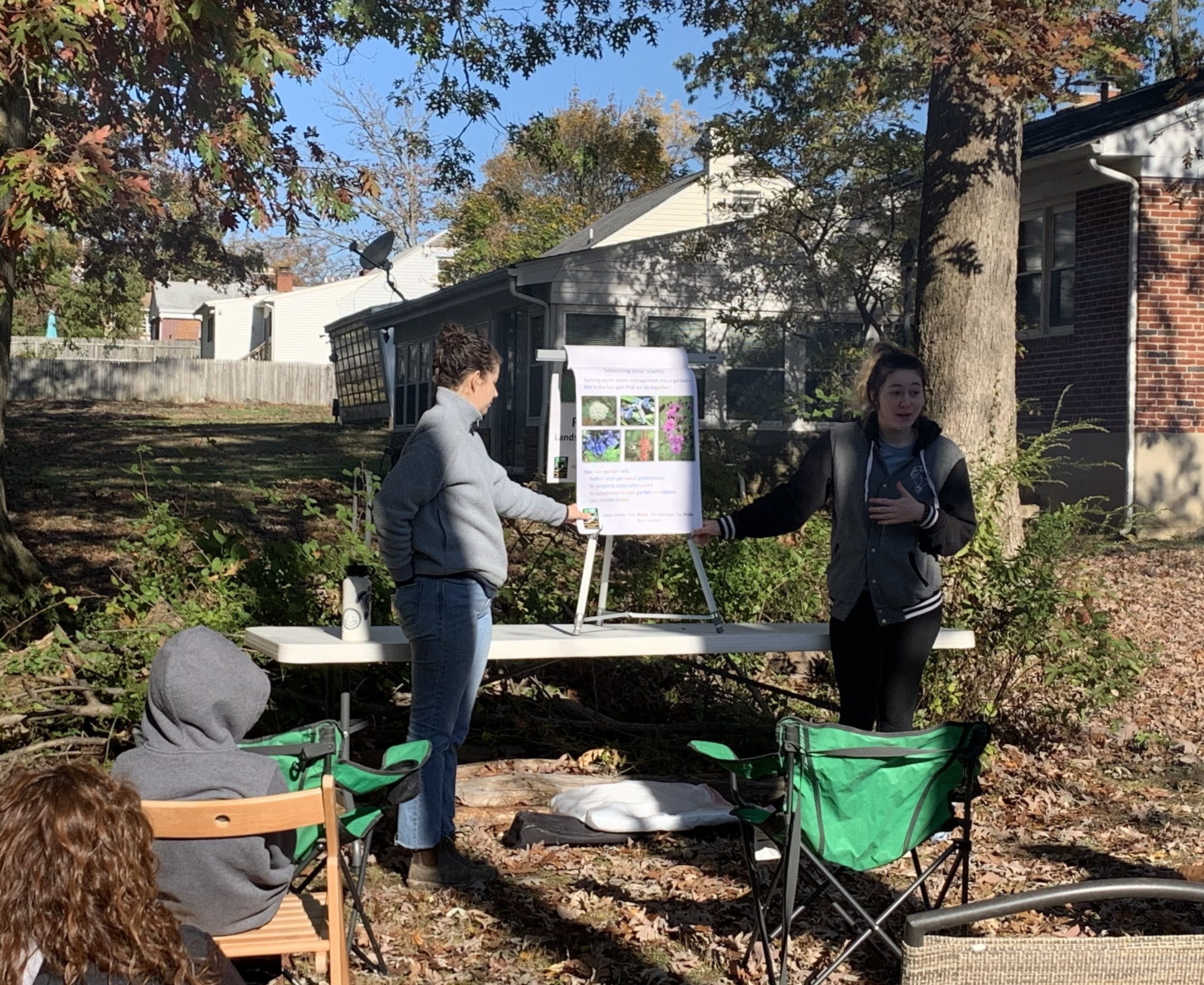
Eden Brown is a high school senior whose Girl Scout Gold Award involved installing a rain garden with the GVC. She worked closely with graduate student, Brittney Baltimore, who designs rain gardens for the GVC through a partnership with Morgan State University. Here is Eden’s reflection on her experience working with the GVC:
As an ambassador in Girl Scouts coming up on my final year of scouting, I knew that I wanted to do something to improve my community’s ecosystems. Both my Bronze and Silver Awards revolved around the idea of ecological improvements. I have always been interested in this subject, because I have always lived in Baltimore city and had limited opportunities to experience the outdoors. Scouting had been able to give me those opportunities and I have been inspired to do more to improve the state of our environment in response to the effects of humans. However, I was unsure about what path I wanted to take with my project, until I learned about the disastrous effects of natural and artificial materials that into our natural waterways. I decided that I wanted my project to revolve around preserving our waterways and instructing my community on the negative effects and what they can do to preserve them. Via my scout leader, I learned about Gunpowder Valley Conservancy and the amazing work they are doing to improve the water quality of our local water systems and spread information on prevention of water pollution. Throughout this process, I was blessed to have the opportunity to work closely with my mentor Brittany, who worked me through every step of the process. I was exposed to an influx of new and fascinating information as I became more involved in the process. I was shocked to discover the amount of man made materials that contribute to water pollution: litter, chemicals absorbed from roads, plant fertilizers, and other toxic substances. However, I was pleased to learn that rain gardens, in addition to preventing flooding and water pollution, served as a habitat for small animals and insects, such as butterflies. I was able to learn how to use new equipment and learn techniques such as recording land topography and how to design the layout of an exterior project to optimize its effectiveness. When participating and assisting in the leadership of the rain garden workshop, I was pleasantly surprised of how well the workshop was able to coordinate the volunteers. The end result was truly a beautiful addition to the space and it was fulfilling to know that the project was not just cosmetically appealing, but served a more meaningful purpose.
